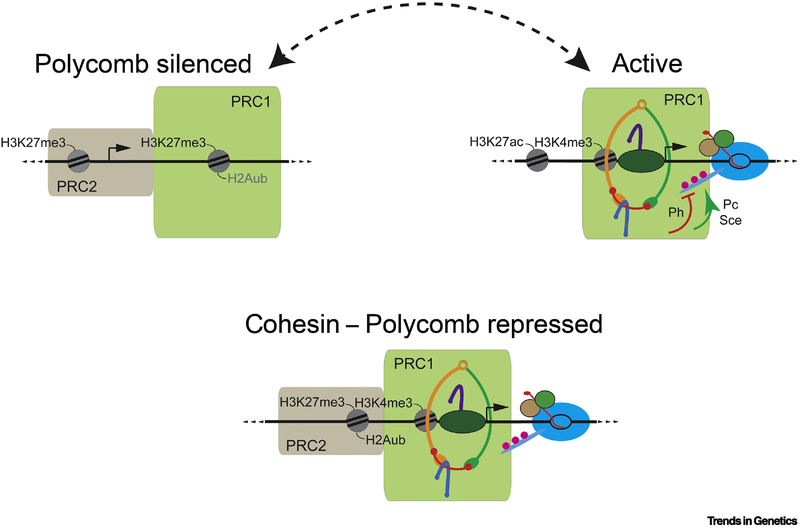Figure 2. Functional Interactions Between Cohesin and the PRC1 Polycomb Complex in Transcriptional Regulation of Silenced and Active Genes.
The upper left shows a Polycomb silenced gene, where the PRC2 Polycomb complex trimethylates histone H3 (H3K27me3) and PRC1 mono-ubiquitinylates histone H2A (H2Aub). H2Aub is not observed at all silenced genes, as indicated by the gray text. The upper right illustrates an active gene promoter where cohesin recruits PRC1 [63]. The Polyhomeotic (Ph) PRC1 subunit inhibits phosphorylation of the C terminal domain of the Pol II Rpb1 subunit, while the Polycomb (Pc) and Sex combs extra (Sce) subunits promote phosphorylation [66]. The opposing effects on serine 5 and serine 2 phosphorylation influences transcriptional elongation and may aid promoter-proximal pausing. The dashed arrow between the silenced and active genes indicates that the PRC1 distribution between active and silenced genes is sensitive to cohesin dosage. Depletion of cohesin increases the PRC1 level at silent genes, which can explain reversal of Pc mutant phenotypes by Nipped-B and cohesin subunit mutations [63] and reduction of H3K27me3 increases PRC1 levels at active genes (unpublished). The bottom diagram illustrates genes that are repressed, but not fully silenced by cohesin and PRC1 [6, 68]. These genes are transcribed at low to moderate levels and marked by H3K27me3 and histone modifications associated with active genes, such as H3K4me3. H2Aub is typically at high levels on these genes. Although rare, these genes encode proteins that regulate transcription, and include the genes encoding the Psc and Su(z)2 PRC1 subunits.

